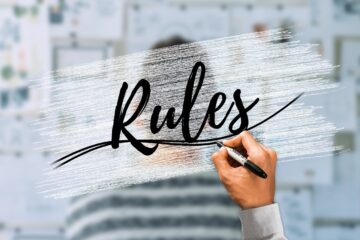![]()
Introduction:
The deep pocket theory originally came from American Slang which means extensive financial wealth and resources. Primarily it was used about companies and organizations or individuals, who have substantial financial resources. In 1970 deep pocket theory became popular in terms of litigation. In ambient of law, the defendant is often considered as the person or organization with a deep pocket as he has money to pay for a verdict even though that person was not at fault. Generally, Deep Pocket Theory is used in the Law of Torts, Environmental Law, and other economic parts of the law. The fundamental principle of tort law is that wrongdoer is liable to pay for damages based on facts and laws. Most of the courts and judges follow the principle that one is responsible only for his or her misdeed. Nonetheless in certain cases, wrongdoers have immunity from proceedings.
However, some courts have elongated the law to impose the liability on the party who was not engaged in wrongful conduct because the actual wrongdoer has financially inadequate, due to which he is inapt in paying the damages. Such a concept is known as a deep pocket theory in law. The theory is applicable in such factual situation where the party is not in the situation to borne the risk or the actual wrongdoer for whatever reason is unavailable therefore such uncertainty of an activity should be borne by the person or we can say the innocent person who is in a better or a relatively good position to handle such a risk. Occasionally laws changes according to the needs and values of the society, in this respect also law decides to undertake the concept of Deep Pocket Theory.
Characteristics of Deep Pocket Theory
Identifying deep pocket theory is a bit challenging as courts never acknowledge it. However, there are a couple of courts who have taken a different approach and change the law to connect the defendant with the plaintiff’s alleged harm. In-State v. Schenectady Chemicals Inc[1], New York trial court openly reveal that they were granting an environmental clean-up action against a company that didn’t shed the chemical pollution, on the belief that someone must pay to correct the problem. Ad nauseam American courtroom has been dealing with such cases where injured plaintiff or public land has been contaminated because the party who is responsible is unavailable or unknown the plaintiff sues someone else to pay the claims. In such circumstances, most of the court applies the law of impartiality and dismisses the case against the defendant who legally didn’t cause the alleged harm. Only some courts have taken a different approach in above mention circumstance and connect the plaintiff’s alleged harm with the defendant based on unsupported scientific theories.
In Huck vs. Wyeth Inc[2], the plaintiff of this case sued the manufacturer of the company though he took drugs of the different company(the entirely different company made and sold it), the Iowa Supreme Court first time call out plaintiffs liability theory as deep pocket jurisprudence stating that such jurisprudence is law without any principle. Decision made in this case is considered a milestone, it must be used in such cases where the theory of deep pocket is applied. In torts deep pocket theory has its application in four areas which are:
- Innovator Liability
- Law of Nuisance
- Automaker Liability
- Independent Contractor
Innovator liability
In the case of Huck vs. Wyeth, Inc. innovator liability theory first came up. This theory elaborates the product law. In the case of Huck innovator liability was the main issue. Though the plaintiff ingested competitors generic products, allegedly injured but he sued the innovator of brand name drug. Previously US Supreme Court held that federal court generally usurped the claims against a generic drug company. However, in Wyeth v. Levine[3]court held that the federal court was not usurped the claims against Innovator Company. According to the doctrine of preemption generic drug company is protected from liability which arose and branded drug manufacturer can be sued under deep pocket jurisprudence. The innovator liability theory elongates the product liability law.
A company is held liable though it didn’t make the product that allegedly injured the plaintiff. To accomplish the transfer of responsibility from a generic to a branded drug company is allegedly called transferred of misrepresentation. This theory contends that the generic drugs must contain the caution related to branded drugs, the branded drug company who is responsible for mentioning the caution will be responsible to pay for the injuries of the generic drug company. This theory was rejected by all most every court. Only Alabama Supreme Court in Wyeth Inc. v. Weeks[4] recognized the innovator liability theory. In 2015 Alabama legislature overruled the decision of state High Court.
Law of Nuisance
Advocates of the plaintiffs endeavor to enlarge the scope of public nuisance related laws which subjects the defendants having deep pockets to pay for the liability of various social and environmental offenses. A law akin to public nuisance in torts has a narrow purpose which allows courts to use the law of torts rather than criminal or regulatory laws in respect of public nuisance. Public nuisance means when someone unlawfully interferes with public rights such as dumping pollutants in the river, blocking roads, etc. The court can issue an injunction against the person for causing such a nuisance and make him liable to pay for the damages. However, the theory of public nuisance has been used against a product manufacturer.
In India, the deep pocket theory has been discussed in the environmental case of M.C. Mehta vs. Union of India[5], M.C. Mehta an advocate filed a writ petition against the Shriram Industry, who were engaged in the manufacturing of hazardous chemicals while it was located in a densely populated area. Whilst the petition regarding this was pending in the court, there was a leakage of oleum gas which affected lots of people.
While deciding the case Supreme Court laid down the principle of deep pocket theory According to the judges, while discussing this theory, stated that there must be a correlation between damages paid by enterprise to the magnitude and the capacity of the enterprise because such compensation must have a deterrent effect on the industry. This means that the enterprise that is more economically booming, higher the amount of compensation such an enterprise would pay solely because it has caused harm on account of an accident while carrying out a hazardous task or any form of dangerous activity which affected the public at large. Later the judge said that his findings were only obiter dicta. Indian Judiciary rejected this theory as it will affect the global corporate governance.
Automaker Liability
When the doctrine of crashworthiness is elongated beyond its reasonable limits then the deep pocket theory of jurisprudence comes. The theory of crashworthy in tort has been described as a situation where liability is borne by an automobile manufacturer who renders such cars which is unreasonably dangerous in the term when they crash. For example: If the plaintiff suffers injuries because of a manufacturing defect or the manufacturer failed in providing safety features in a particular automobile. In such cases, the automobile will be considered as crashworthy.
In Holiday Motor Corp. v. Walters[6] Virginia Supreme court overruled the theory and applies Deep-pocket theory. The fact of the case was such that the plaintiff was driving a convertible car, in front of her a pool feel off the truck, and as a result, she suffered serious injuries. While avoiding the pool plaintiff vehicle rolled over several times as there was no one to sue so she sues the manufacturer of the car. In Nissan Motor Co., Ltd. v. Maddox,[7] a drunk driver was driving his car in the wrong direction of the road, as result of that there was a head-on collision with another car, the trial court stated the judgment against Nissan Motor Co. and held that plaintiff is liable to get punitive damages from the company. Trial court gives their decision on the ground that the Nissan diligently adhered to federal safety standards.
Independent Contractor
According to tort law employer is vicariously liable for any act done by its employee. The concept of an independent contractor in torts states that the company that hires an independent contractor is not liable for any act done by such an independent contractor. In three situations a company is liable for an independent contractor:
- Injuries are caused due to companies own negligence
- Injuries caused while performing non -delegable duties
- Injuries caused by inherently dangerous activities.
Except in these cases, the employer or company is not liable for any act or negligence of an independent contractor. In independent contractor cases theory of deep pocket, jurisprudence is quite lurking. Few courts suggested accepting the theory that while hiring the independent contractor it shall be the duty of hirer or company to check that weather independent contracts are financially capable to pay for damages in case of any judgment passed against them. In the case of NLRB v. Hearst Publ’ns,[8] to add another deep pocket person plaintiff sues the large business to claim damages.
Deep Pocket Bias in the Tort System
To proof weather, there is deep pocket bias in the tort system two conditions must be fulfilled. Firstly, in similar cases, a judgment given should be less favorable to the defendant having a deep pocket, and secondly, it must be done after attributing defendant wealth. Most of the cases where deep pocket companies are involved in such cases these companies are found likely to be liable. Even if the judge didn’t give his judgment against the deep pocket holder then also it has some elements in tort for example: in the case where plaintiff files a lawsuit attorney of such plaintiff chooses to serve deep pocket person or entity to seek more compensation.
Conclusion
Judiciary is widely influenced by the earmark of deep pocket theory. To reinforce a fair and balanced civil justice system one can positively use this knowledge to identify other instances of such unprincipled burden-shifting and devise opposition strategies. According to the history of deep pocket theory jurisprudence it occurs only when the victim is innocent, there is severe damage done to the environment, the original defendant is not available or he doesn’t have many funds to pay as compensation or the risk of harm was arguably foreseeable to the defendant. Courts must refrain themselves from becoming a mechanism who transfer money from companies or deep pocket entity to injured person. Notwithstanding they should serve justice while allowing the businesses to pay damages for which they are liable.[9]
References:
[1]459 N.Y.S.2d 971, 977
[2] 850 N.W.2d 353, 380 (Iowa 2014)
[3] 555 U.S. 555 (2009)
[4] 159 So. 3d 649 (Ala. 2014)
[5] 1987 AIR 1086,
[6] 790 S.E.2d 447, 450-53 (Va. 2016)
[7] 486 S.W.3d 838 (Ky. 2015)
[8] 322 U.S. 111,
[9] https://digitalcommons.law.ou.edu/cgi/viewcontent.cgi?article=1319&context=olr accessed on 20th July 2020



0 Comments